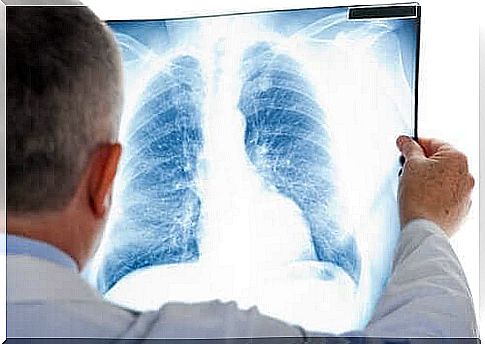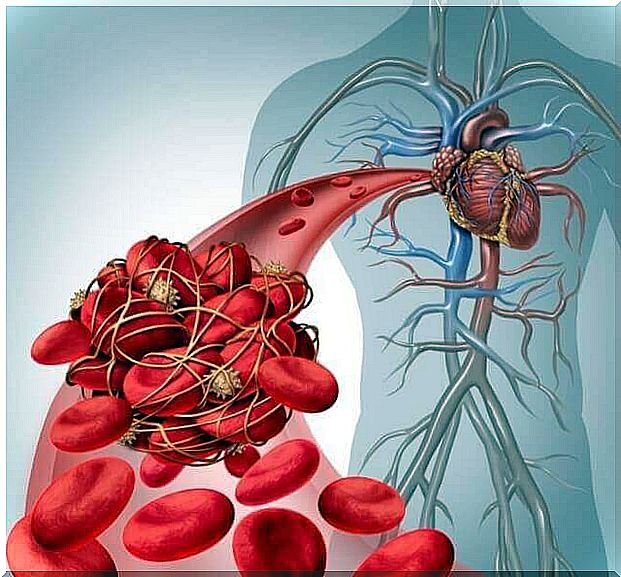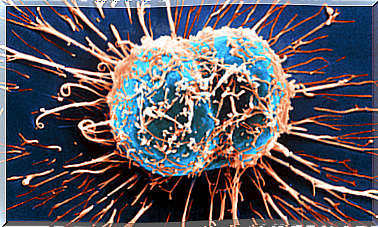Pulmonary Embolism: Symptoms And Treatment

Pulmonary embolism is a serious and relatively frequent problem. Experts estimate that it occurs in one in 1,000 people each year. However, they believe this percentage is higher, as not all cases receive medical attention.
It occurs when a mass, usually a blood clot, blocks blood flow to the lungs. While a blood clot is the most common trigger, other culprits can be a fat or air embolism.
A pulmonary embolism can be fatal. It is currently estimated that between 8% and 10% of patients with the condition die. However, the severity of each case is determined by the size of the clogged artery and the amount of lung tissue affected.
What is a pulmonary embolism?

To put it in simple words, a pulmonary embolism occurs suddenly due to an obstruction of a pulmonary artery. This usually happens when pieces of a venous thrombosis come off, travel and get stuck in an artery in the lungs.
Doctors divide pulmonary embolism into two main groups, depending on its severity:
High risk: Occurs when the patient has low blood pressure or is experiencing shock. The premature death rate in these cases is minimal.
Normal blood pressure: In these cases, the blood pressure is normal. It contains two subgroups:
- Low risk, usually requiring only outpatient treatment.
- Increased risk of complications, requiring urgent treatment and hospitalization.
Causes
Most cases of pulmonary embolism are a secondary condition associated with triggering risk factors. This means that they are the result of another health problem. The main risk factors are:
- Leg injuries
- Damage to the spine
- Serious traumatic injuries
- Major surgery
Another factor that can cause pulmonary embolism is cancer. Lung cancer, pancreatic cancer, and types of central nervous system cancer are the most likely to cause complications with thrombosis. The same happens with gastrointestinal tumors and blood neoplasms.
The hereditary component also has a major influence, although it is not the determining factor. Pulmonary embolism is also more common in women who use oral contraception. In addition, pregnant women are at greater risk, especially during the third trimester and up to six weeks after delivery.
Finally, the risk of pulmonary embolism is greater in those who have undergone in vitro fertilization, as well as in postmenopausal women taking hormone replacement drugs. In the latter case, the risk varies depending on which drugs are used.
Symptoms

Difficulty breathing and chest pain are the main symptoms of pulmonary embolism. Shortness of breath, or dyspnea, is the most common symptom. The condition manifests as having difficulty taking a deep breath and not being able to breathe fully and properly. The symptoms come on suddenly.
Patients also experience sudden, intense chest pain. The pain is felt behind the sternum and is similar to the pain associated with a heart attack. The pain increases when the patient coughs and inhales, and does not go away when the patient changes position.
In addition, the following symptoms are common:
- Syncope: loss of consciousness
- Dry or wet cough
- Hemoptysis: coughing up blood, which indicates that there is a lung infarct
- Tachypnea: accelerated breathing
- Tachycardia: increased heart rate
- Other symptoms, such as paleness, cyanosis (bluish color of the skin), dizziness, fever, sweating, and disorientation
Treatment of a pulmonary embolism
A pulmonary embolism is diagnosed using a combination of clinical suspicion, diagnostic imaging, and a D-dimer blood test. The patient’s symptoms determine the suspicion of a pulmonary embolism. A chest X-ray, electrocardiogram, and blood gas test will assist in making a diagnosis.
Anticoagulants are the most important part of the treatment. Initially, they are administered parenterally (intravenously, intramuscularly, or subcutaneously), followed by oral administration.
If doctors detect and treat the condition in time, the patient’s prognosis is good. However, in 3.8% of cases, the emboli become chronic. In recent years, the number of patients who die of pulmonary embolism during hospitalization has decreased significantly.









